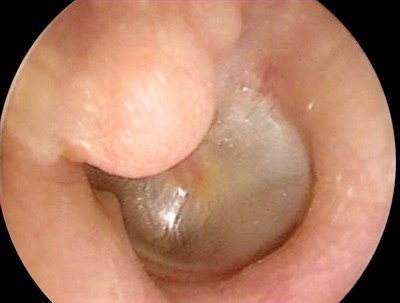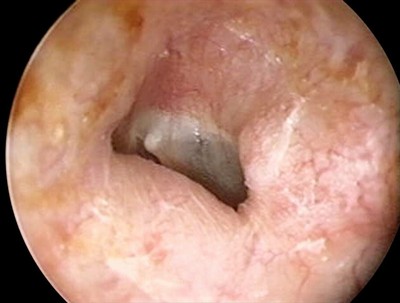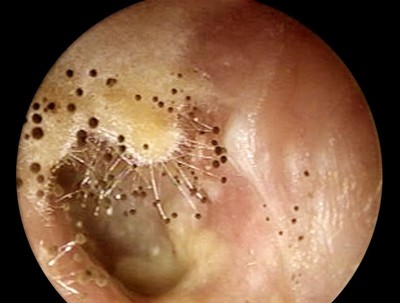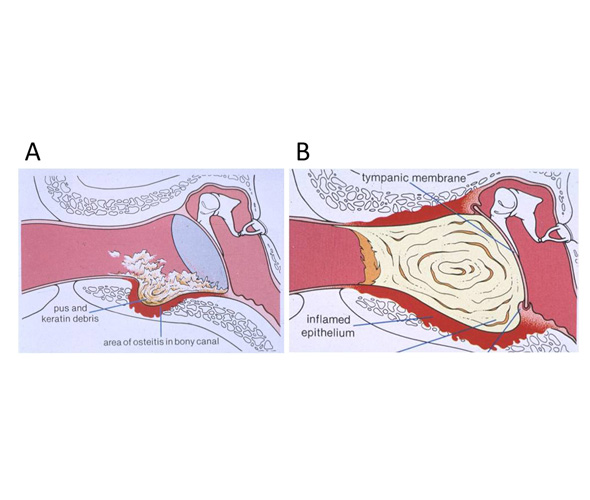Read the following publication: Rosenfeld, R. M., Schwartz, S. R., Cannon, C. R., Roland, P. S., Simon, G. R., Kumar, K. A., … Robertson, P. J. (2014). Clinical practice guideline: acute otitis externa. Otolaryngology–Head and Neck Surgery : Official Journal of American Academy of Otolaryngology-Head and Neck Surgery, 150(1 Suppl), S1–S24.
1.
Discuss the embryology of the external ear. At what time during embryogenesis does the auricle develop?
2.
Name the normal landmarks of the auricle? What are the normal dimensions of the auricle?
3.
Review the sensation to the auricle and EAC.
4.
From an embryologic standpoint, explain a first branchial cleft anomaly (type I and II) and why the facial nerve needs to be considered in surgical excision of this anomaly.
5.
Review the anatomy of the external auditory canal. Describe the “ideal” external canal environment.
6.
What is relapsing polychondritis?
7.
Differentiate exostoses vs. osteomas.
8.
Discuss the bacteriology and treatment of acute otitis externa? Make sure to compare the different types of otic drops that can be used to treat otitis externa.
9.
Patient has otitis externa and a TM perforation. Which otic drops are safe to use?
10.
Why does fungal otitis externa occur? How can you tell it is fungus? What is the treatment?
11.
What causes chronic otitis externa and how is it treated?
12.
What are some treatment options of radiation-induced otitis externa?
13.
Discuss the treatment of thermal injuries and frostbite of the ear.
14.
Discuss causes and treatment options for myringitis.
15.
Discuss the various ways to manage cerumen impaction. Which do you prefer and why. How will you instruct patients on proper aural hygiene?
Reference(s):
Schwartz, S. R., Magit, A. E., Rosenfeld, R. M., Ballachanda, B. B., Hackell, J. M., Krouse, H. J., … Cunningham, E. R. J. (2017). Clinical Practice Guideline (Update): Earwax (Cerumen Impaction). Otolaryngology–Head and Neck Surgery : Official Journal of American Academy of Otolaryngology-Head and Neck Surgery, 156(1_suppl), S1–S29.
16.
Keratitis obturans-describe the typical presentation and management.
17.
Discuss the etiology, management and potential complications of auricular hematoma.
18.
Discuss the typical history and physical exam of a patient with malignant otitis externa. What is the most common cranial nerve affected? Name medical conditions other than diabetes that are potential risk factors for this condition.
19.
When is the role of nuclear medicine studies, MRI, and CT in the diagnosis and management of malignant otitis externa? Are there any laboratory studies that can be used to follow a patient with malignant otitis externa?
20.
What is the current recommended management for patients with malignant otitis externa? (Please comment on length of treatment, single or double coverage, role for surgery if any, topical therapy, hyperbaric oxygen). Aside from pseudomonas, what are some other potential pathogens that can cause this condition?
21.
Describe the two conditions that are depicted in these illustrations. How does the pathophysiology of these conditions differ? How would you manage these conditions?
22.
Discuss the causes and management of acquired EAC stenosis?





